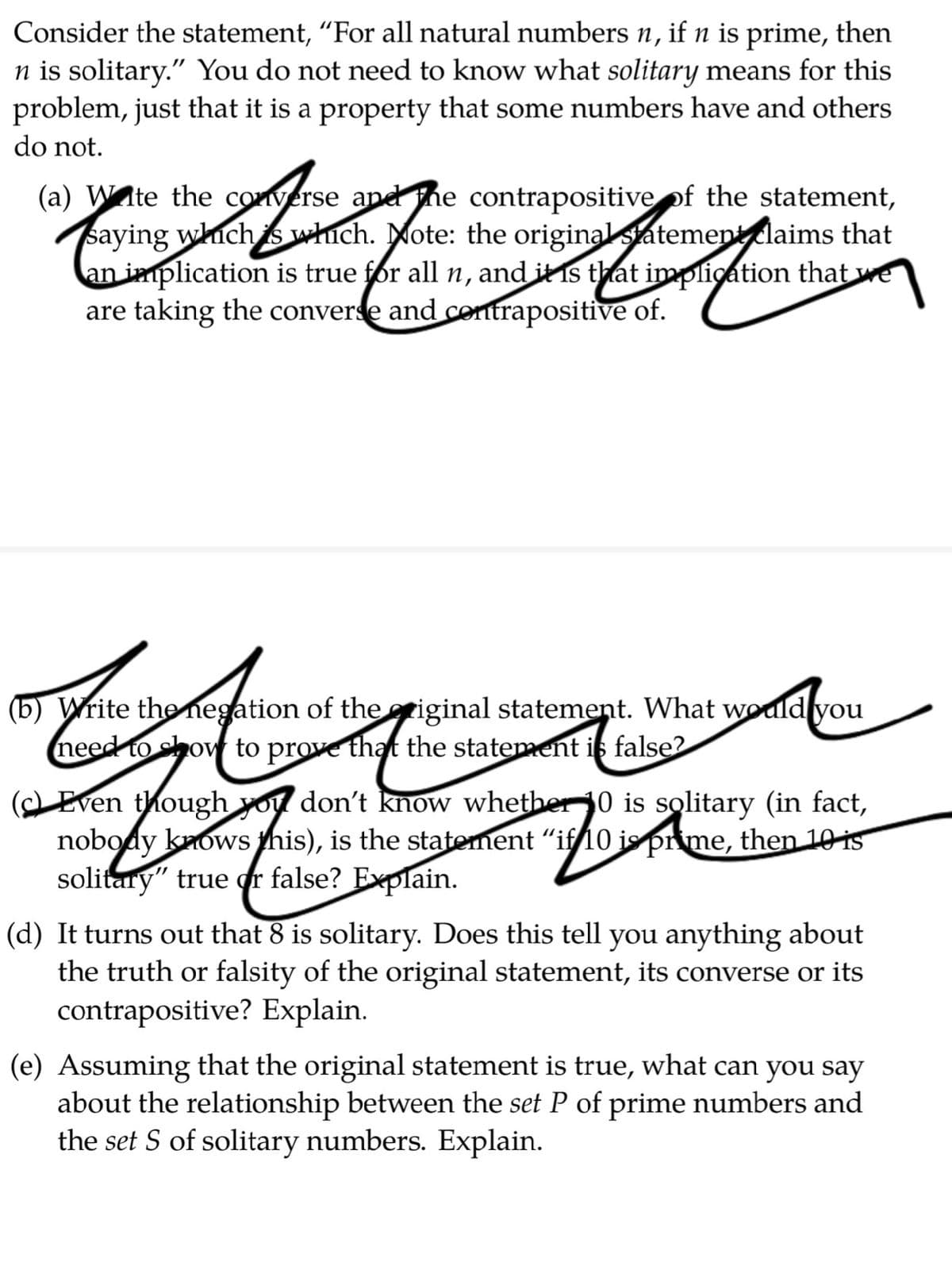It turns out that 8 is solitary. Does this tell you anything about the truth or falsity of the original statement, its converse or its contrapositive? Explain. Assuming that the original statement is true, what can you say about the relationship between the set P of prime numbers and the set S of solitary numbers. Explain.
It turns out that 8 is solitary. Does this tell you anything about the truth or falsity of the original statement, its converse or its contrapositive? Explain. Assuming that the original statement is true, what can you say about the relationship between the set P of prime numbers and the set S of solitary numbers. Explain.
Advanced Engineering Mathematics
10th Edition
ISBN:9780470458365
Author:Erwin Kreyszig
Publisher:Erwin Kreyszig
Chapter2: Second-order Linear Odes
Section: Chapter Questions
Problem 1RQ
Related questions
Question
100%
Stuck need help!
The class I'm taking is computer science discrete structures.
Problem is attached.
please view before answering.
I need help with parts D and E only!
Please explain answer so I can fully understand.
Thank you so much!

Transcribed Image Text:Consider the statement, "For all natural numbers n, if n is prime, then
n is solitary." You do not need to know what solitary means for this
problem, just that it is a property that some numbers have and others
do not.
(a) Wte the converse and he contrapositive of the statement,
saying which s which. Mote: the originalstatementlaims that
an implication is true for all n, and it is that implication that we
are taking the converse and contrapositive of.
are taking the conver e and or
(b) Write theMnegation of thegriginal statement. What would you
need to chow to prove that the statement is false?
(Even though you don't know whether0 is solitary (in fact,
nobody knows this), is the statement "if 0 is prime, then 10 is
solitary" true r false? Explain.
(d) It turns out that 8 is solitary. Does this tell you anything about
the truth or falsity of the original statement, its converse or its
contrapositive? Explain.
(e) Assuming that the original statement is true, what can you say
about the relationship between the set P of prime numbers and
the set S of solitary numbers. Explain.
Expert Solution
This question has been solved!
Explore an expertly crafted, step-by-step solution for a thorough understanding of key concepts.
This is a popular solution!
Trending now
This is a popular solution!
Step by step
Solved in 2 steps

Recommended textbooks for you

Advanced Engineering Mathematics
Advanced Math
ISBN:
9780470458365
Author:
Erwin Kreyszig
Publisher:
Wiley, John & Sons, Incorporated

Numerical Methods for Engineers
Advanced Math
ISBN:
9780073397924
Author:
Steven C. Chapra Dr., Raymond P. Canale
Publisher:
McGraw-Hill Education

Introductory Mathematics for Engineering Applicat…
Advanced Math
ISBN:
9781118141809
Author:
Nathan Klingbeil
Publisher:
WILEY

Advanced Engineering Mathematics
Advanced Math
ISBN:
9780470458365
Author:
Erwin Kreyszig
Publisher:
Wiley, John & Sons, Incorporated

Numerical Methods for Engineers
Advanced Math
ISBN:
9780073397924
Author:
Steven C. Chapra Dr., Raymond P. Canale
Publisher:
McGraw-Hill Education

Introductory Mathematics for Engineering Applicat…
Advanced Math
ISBN:
9781118141809
Author:
Nathan Klingbeil
Publisher:
WILEY

Mathematics For Machine Technology
Advanced Math
ISBN:
9781337798310
Author:
Peterson, John.
Publisher:
Cengage Learning,

